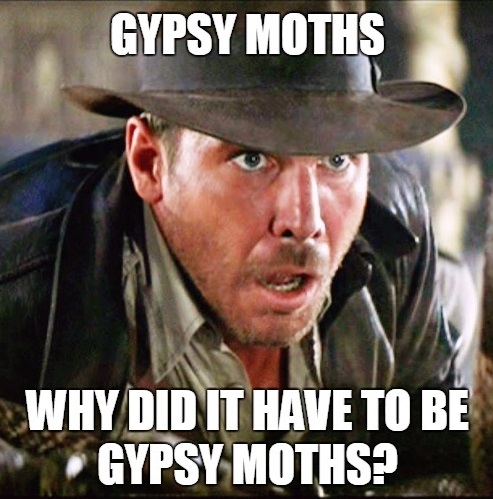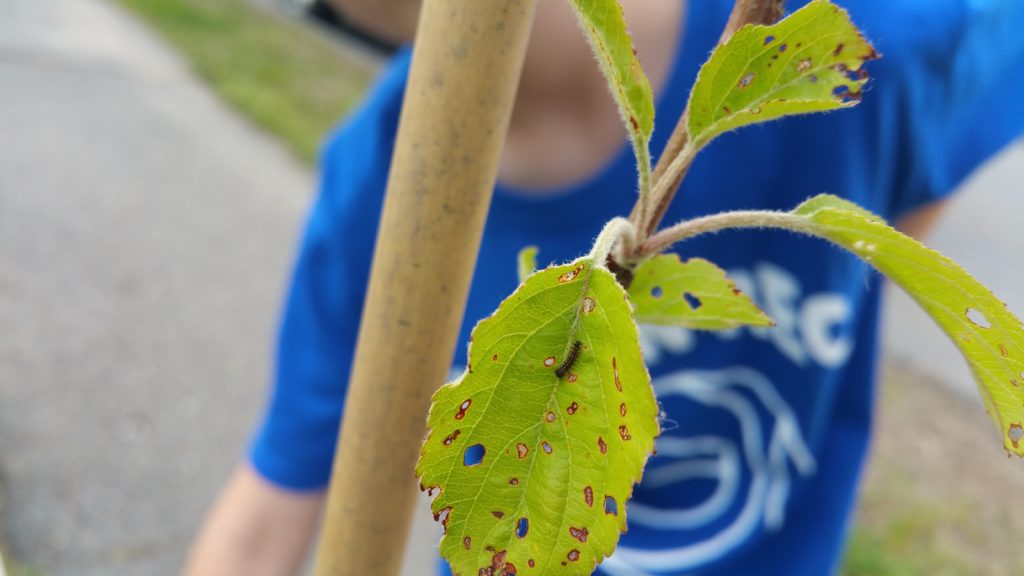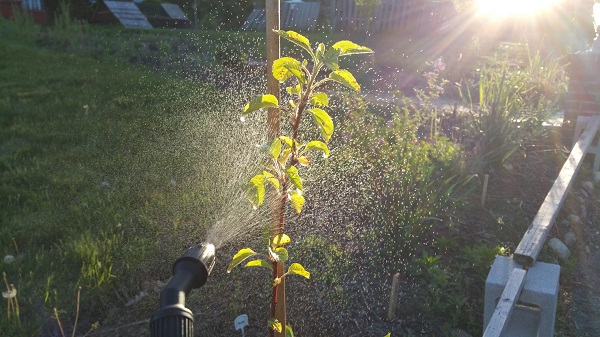By Robert Burgess
New England Botanic Garden at Tower Hill Staff
The Gypsy moth caterpillars are returning. What’s a homeowner to do?
My hometown of Hudson, Mass., was largely spared in 2016, not among the roughly 350,000 acres in the Bay State to face the invasive caterpillars’ wrath. But 2017 was different.
I noticed baby Gypsy moth caterpillars munching away on the leaves of young apple trees in my yard. I’ve planted six heirloom apple trees over the past four years on my third of an acre, attempting to make better use of my lawn by turning it into a small orchard.
Suffice it to say I have a lot of time and energy invested in these little trees and I’d prefer they not be stressed, or worse, by defoliation. I was surprised to learn Gypsy moth caterpillars attack apple trees. According to the U.S. Department of Agriculture, when competition is great, during high infestation years, they’ll expand their menu to past oak to maple, elm, alder, birch, polar, willow, and more. I’ve also spotted the pests on my rosa ragusa, crab apple, and serviceberry – all newly planted with what I imagine are sweet tasting young leaves.
Mass Audubon encourages us to take a deep breath. ”Thinning of forests by gypsy moths may produce a healthier, more diverse, and perhaps a more gypsy-moth resistant stand of trees,” they write. They’re also not fans of chemicals, adding, ”Insecticides also kill the insect predators and parasites of gypsy moths and interfere with other natural controls such as the virus that kills the caterpillars at high population densities.”
Still, it’s disheartening to see a favorite tree ravaged. And when the caterpillars overwhelmed an older tree, it’s gross to hear the leaf crunching and to dodge the droppings.
In the long run, experts predict either a fungus or virus will curtail the numbers we’ve seen in recent years, as has happened in past outbreaks. That appears to be the best case scenario for area forests.
New England Botanic Garden at Tower Hill’s horticulture team encourages homeowners with many trees or large trees to reach out to a certified arborist. And the sooner the better. The young Gypsy moth caterpillars are easier to control than older.
At my home, where I can still reach the top of all my young trees, per the advice of the UMass Extension Service, I’m spraying with B.t. kurtstaki (Bacillus thuringiensis kurtstaki), a natural control method that kills the caterpillars when they eat the leaves, but doesn’t harm other beneficial insects. It’s important to spray judiciously, however, because other caterpillars can be affected too. Birds rely on these insects for food. And plants benefit from their pollination as moths and butterflies.
I’m also wrapping the trunks with bands and Tanglefoot to prevent more caterpillars from climbing up. And I’m squishing as many (while wearing gloves) as possible while hoping Mother Nature brings the cool, rainy conditions that favor the fungus, prevent the return of drought conditions that further weaken trees, and slow the caterpillars’ metabolism.
With any luck, my trees, and yours, will survive this outbreak and Gypsy moth caterpillars will see their numbers drop in subsequent years.
Robert Burgess is the public relations manager at New England Botanic Garden at Tower Hill and a suburban homesteader.



